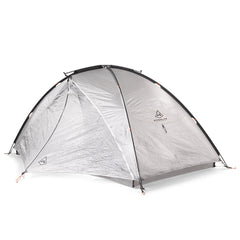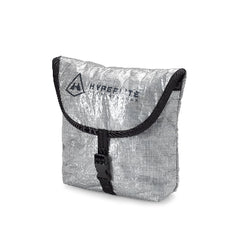Words and Photos by Carl "Professor" Stanfield @prof_carl

This summer, I had the privilege of exploring Maine out of the cozy Mid 1 Ultralight Tent. Weighing in right around a pound, it's a hyper-competitive option for any ultralight backpacker looking to base themselves out of a top-of-the-line shelter.
Tents (or really any shelters) are always a massive investment in a backpacker's kit on multiple fronts. It's no secret that they are amongst the most expensive pieces of gear in any setup, but I think they're also an emotional investment of sorts. Whether they're going to be used for weekend excursions, multi-month thru hikes, or anything in between, a shelter serves as a home in the backcountry. I prefer tents over tarping because of the homeyness they bring me at the end of the day. Those Dyneema walls may not protect me from as much as I convince myself they will, but I feel the emotional comfort still warrants the extra ounces.
All of that to say, I found myself loving the Mid 1 on trail. Here's why I think you might, too.

WEIGHT
The perk of an ultralight tent is that it's lightweight? Groundbreaking, I know. But seriously. Getting the weight of a fully enclosed shelter down to around a pound is big enough of a deal, it's worth hashing out like this. Here we go.
The average weight of most ultralight freestanding tents starts around two pounds, and most only creep up from there. That means that if this is a person's first ultralight, non-freestanding tent, this could be shaving a pound or more from a person's pack weight. That's a pretty huge deal. Sure, there are a couple of things a non-freestanding tent is worse at than its counterpart, but saving a chunk of weight like that is game-changing. Less weight equals less strain on the entire body, from shoulders and back down to legs and feet. This difference is especially crucial for hikers spending more than six to eight hours on their feet. The more ambitious the trip is, the more helpfully impactful this difference becomes. Backpacking becomes an entirely different sport when baseweights drop from 25-30 pounds down to the 12-18 range.

EASE OF SETUP
One of the previously eluded to cons of this style of tent is that it can be more difficult to set up. While I agree that there is a steeper learning curve compared to clipping a couple of poles into place, I'd argue that this tent can become as easy to set up as any. I've logged hundreds of nights setting up trekking pole tents like this, and I've gotten to where my setup time is virtually the same as with any freestanding tent. Seriously.
In fact, I found the Mid 1 to be one of the fastest and easiest to set up in this style of shelter. Without any sort of hustle, this tent is consistently a five-minute setup for me, from the time I'm unbuckling my pack at the end of the day to when I'm beginning to blow up my air mattress. It only uses six stakes to set up (compared to 10 from some of its competitors) which saves both time, ease, and overall weight. Even without the extra space that additional tie-outs provide, I find this tent to have plenty of room for my six-foot self.
SPACIOUSNESS
As a taller-than-average hiker, I've found that I don't quite fit every tent I try. Fully splayed out, it's common for my toes and/or head to spend the night pressed against the fabric. The Mid 1, however, is the perfect size for me. I don't have much wiggle room in the head and foot areas, but that just means I have fully maximized the efficiency of the size and weight of this tent.
Beyond the length, I'm happy with the side-to-side space of the tent, too. Some ultralight tents can feel like coffins, but I still have enough room to spread out a few things when I move in for the night. I even get a little help with my ~interior organization~.

INTERIOR COMFORT
One of my absolute favorite parts of any backpacking day is the moment I'm in my tent for the night. The knowledge that a comfortable, warm, dry home is waiting for me at camp has gotten me through some tough days on the trail. I love that moment of being fully cozy and done for the day. This minimalist tent has just what I need for that moment and nothing that I don't.
To start, I really like the fixtures on the tent entrances that hold the flaps in place. The outside vestibule flap features a magnet closure, perfect for easily securing the vestibule back on the laziest of nights with the coldest of fingers. The next layer has a bright orange cinch cord system for the mesh door. Both of these mechanisms are completely different visually from each other, which keeps my tired hiker brain from ever getting frustrated mixing them up.
Finally, I really do love the built-in dresser closet (tiny mesh pocket). I don't have a ton of stuff to unpack at the end of the day, but it really does help to have a secure place to keep my little odds and ends off the tent floor. It's shocking how easily a hiker can lose one of their few possessions in the void of their tent, so any prevention tool is always appreciated.
FINAL THOUGHTS
I love ultralight backpacking. I love camping. The Mid 1 helps me happily achieve both of those. At this point in my backpacking career, I'm much more of a thru hiker than anything else, and a cozy reliable tent is one of my absolute favorite pieces of gear. The Mid 1 sets up as easily as any tent of this style can; it's got plenty of room, and it reduces the wear and tear on my body as I continue to push it across thousands of miles in the backcountry. Take it from a far-traveled backpacker: this tent is the real deal.




















